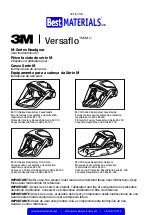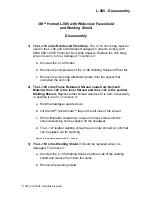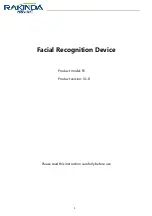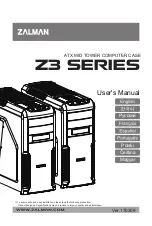
Installation
12
SS-SVX004C-EN
Suction piping is typically sized for a total friction pressure
drop equivalent to 2°F evaporator temperature.
If the RCU is installed below the evaporator, the suction
line should include an inverted trap the height of the
evaporator coil. This prevents migration of liquid
refrigerant to the compressor during off cycles (refer to the
above figure).
Liquid Line
The velocity of refrigerant in the liquid line is less critical
because liquid refrigerant and oil are mixed thoroughly in
the liquid state. The main concern when sizing the liquid
line is to maintain a solid liquid head of liquid refrigerant
entering the thermostatic expansion valve (TXV). If the
refrigerant pressure falls below its saturation
temperature, a portion of the liquid refrigerant changes
into vapor. Vapor will cause flashing and prevent the TXV
from functioning properly. As flashing begins, the rate of
pressure loss increases.
During operation the liquid refrigerant is sub-cooled
slightly below its saturation temperature. Sub-cooling
must be sufficient to allow the necessary pressure drop
without approaching a saturation condition where gas
flashing could occur. Under normal operation, the
refrigerant is sufficiently cooled as it leaves the
condensing unit to allow for normal line pressure drops.
Liquid line size is to be selected based on a pressure drop
equivalent to 2°F sub-cooling.
Operating liquid line velocities should be less than 300
fpm to avoid liquid hammering during solenoid operation.
Refer to the below tables for recommended line sizing.
Note:
Vertical runs are based on a total rise of 30
equivalent ft for longer rises, individual
calculations must be made. Sizes assume the use
of single risers; double risers may be necessary.
Table 2.
Recommended liquid line sizes
Recommended Liquid Line Sizes
Model No./
RCU To Evaporator- Equivalent ft
(a)
(a) Equivalent ft accounts for the linear pipe length as well as equivalent
length of Valves, Elbows & Tee’s as shown in the previous chart.
Total Unit
Capacity
Btu/h
50
or less
100
or less
150 or less
012 / 12,000
3/8
3/8
3/8
018 / 18,000
3/8
3/8
1/2
024 / 24,000
3/8
1/2
1/2
032 / 32,000
1/2
1/2
1/2
040 / 40,000
1/2
5/8
5/8
048 / 48,000
1/2
5/8
5/8
048D / 48,000
3/8
1/2
1/2
060 / 60,000
1/2
5/8
5/8
072D / 72,000
1/2
1/2
1/2
084D / 84,000
1/2
5/8
5/8
120D / 120,000
1/2
5/8
5/8
Table 3.
Recommended suction line sizes
Recommended Suction Line Sizes
Capacity
Btu/h
Evaporator To RCU- Equivalent ft
(a)
(a) Equivalent ft accounts for the linear pipe length as well as equivalent
length of Valves, Elbows & Tee’s as shown in the previous chart
012 / 12,000
5/8
5/8
5/8
5/8
018 /18,000
7/8
7/8
7/8
7/8
024 / 24,000
7/8
7/8
7/8
7/8
032 / 32,000
7/8
7/8
1-1/8
7/8
040 / 40,000
7/8
7/8
1-1/8
1-1/8
048 / 48,000
1-1/8
1-1/8
1-1/8
1-1/8
048D / 48,000
7/8
7/8
7/8
7/8
060 / 60,000
1-1/8
1-1/8
1-1/8
1-1/8
072D / 72,000
7/8
7/8
1-1/8
7/8
084D / 84,000
1-1/8
1-1/8
1-1/8
1-1/8
120D / 120,000
1-1/8
1-1/8
1-1/8
1-1/8
H = Horizontal Run; V = Vertical Run
Note:
Do not exceed 15 ft vertical distance when
installing the condensing unit below the
evaporator.
If the condensing unit is installed below the evaporator
section, the installer must observe the pressure changes
that occur as a result of the elevation change. See the
below table that follows for the vertical pressure drops.
Table 4.
Vertical pressure drops for refrigerants
Refrigerant Type
Pressure Drop in PSI/ft
(Risers)
R407C
0.47
50 or less
100 or less
H
V
H
V













































